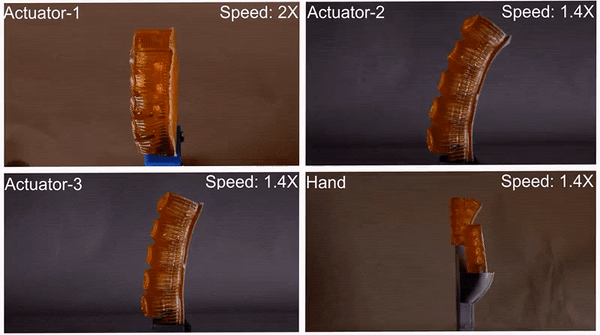A squishy robot hand can sweat to cool itself down

The news: Robots are typically made of metal and motors, so they can easily overheat and stop working. To avoid that problem, researchers at Cornell University have created a soft robot hand that can cool itself down the same way we do—by sweating.
How it works: The hand is made up of three hollow 3D-printed fingers made from hydrogels. Each finger is filled with water and covered with a surface layer of micropores. The pores are closed at cool temperatures, but if they go above 86 F (30 °C), the surface layer expands, allowing the pores to open and “sweat” out the water, cooling the robot down. The fingers are three times more efficient than humans at sweating, the researchers say in a paper in Science Robotics.
Apart from being “ugh,” what’s it for? This approach could let robots operate for longer, and in environments where you can’t cool them down with fans or air conditioning units. However, there are downsides: there’s currently no way to top up the fluid levels, and the added moisture may degrade the robots’ ability to grip objects. And this robot is extremely basic right now.
Sign up here to our daily newsletter The Download to get your dose of the latest must-read news from the world of emerging tech.
Deep Dive
Artificial intelligence
Large language models can do jaw-dropping things. But nobody knows exactly why.
And that's a problem. Figuring it out is one of the biggest scientific puzzles of our time and a crucial step towards controlling more powerful future models.
Google DeepMind’s new generative model makes Super Mario–like games from scratch
Genie learns how to control games by watching hours and hours of video. It could help train next-gen robots too.
What’s next for generative video
OpenAI's Sora has raised the bar for AI moviemaking. Here are four things to bear in mind as we wrap our heads around what's coming.
Stay connected
Get the latest updates from
MIT Technology Review
Discover special offers, top stories, upcoming events, and more.